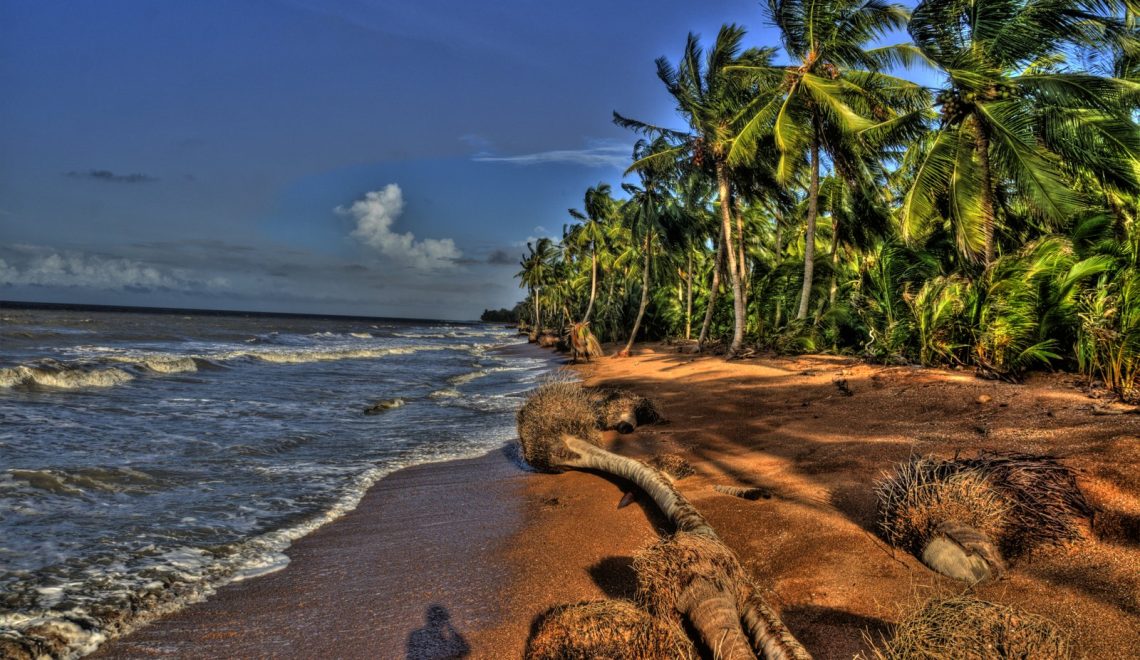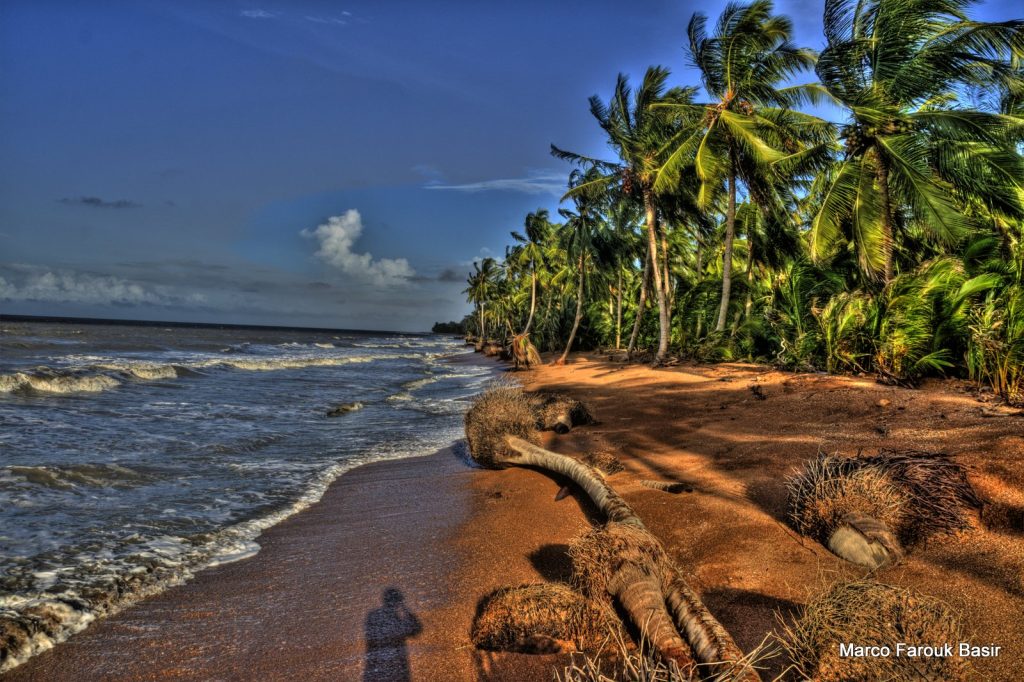Shell Beach: Where the Ocean Meets the Wild Heart of Guyana


There are places that hum softly in the background of a country’s story—quiet, remote, and breathtakingly alive. Guyana’s Shell Beach Wildlife Sanctuary is one of those places.
It’s not on every postcard or travel guide. It doesn’t have crowds or resorts or easy access.
And yet, for those who make the journey, it offers something few destinations on Earth can match: the chance to witness the miracle of life unfolding on the edge of the sea.
🐢 A Hidden Shoreline of Wonder
Located in northwestern Guyana, along a 120-kilometer stretch of coastline between the Barima and Pomeroon Rivers, Shell Beach is unlike any other beach in the Caribbean or South America.
Forget golden sand. Forget sun loungers.
Here, the shoreline is made up of billions of tiny seashells, crushed over centuries by waves and time. They shimmer beneath your feet like pale pink glass, and each step seems to whisper an ancient secret.
But it’s not just beauty that draws people here — it’s purpose.
Every year, from February to August, this quiet expanse of beach becomes a stage for one of nature’s most powerful performances: the nesting of four endangered species of sea turtles — the Leatherback, Hawksbill, Green, and Olive Ridley turtles.
They come from the deep, mysterious Atlantic, heaving their massive bodies ashore under the moonlight. They dig, lay their eggs, and return to the sea — leaving behind the promise of new life in shallow, sandy graves.
And months later, tiny hatchlings emerge under the stars, scrambling toward the same waves their ancestors once conquered.
🦜 A Symphony of Wildlife
Shell Beach isn’t just a sanctuary for turtles — it’s a full-blown wildlife symphony. The nearby mangrove forests, mudflats, and wetlands teem with life.
You might spot a scarlet ibis painting the sky red at sunrise, or a giant river otter gliding through the backwaters.
Look closer, and you’ll see black caimans, howler monkeys, and even the elusive jaguar, moving like a shadow through the dense foliage.
Birdwatchers call this stretch of coastline a hidden gem — home to over 200 bird species, including herons, kingfishers, egrets, and migratory visitors that cross continents to rest here.
For photographers, Shell Beach is a dream in motion — dramatic skies, wild animals, untouched landscapes, and the raw authenticity of a place that still belongs to nature.
🌿 Guardians of the Coast: The Indigenous Villages
But what makes Shell Beach truly extraordinary isn’t just the wildlife — it’s the people who protect it.
Several Indigenous villages line the coastline, including Almond Beach, Gwennie Beach, and Kumaka. The Warrau and Arawak communities here have lived in harmony with the land for generations.
They are the silent stewards of the sanctuary, balancing traditional life with modern conservation. Many have become eco-tour guides, turtle wardens, and researchers, working alongside organizations like the Guyana Marine Turtle Conservation Society (GMTCS) to protect nesting sites and educate visitors.
For travelers, meeting these communities offers an unmatched cultural experience — learning about ancient fishing techniques, forest medicine, and stories passed down through generations.
Sitting by a wood fire at night, with the sound of the sea just beyond the mangroves, you begin to feel part of something bigger — a story of resilience, connection, and respect.
🚤 The Journey to Shell Beach: An Adventure Itself
Reaching Shell Beach is an adventure — and that’s part of its magic.
From Georgetown, travelers typically fly or drive to Charity, a riverside town on the Pomeroon River. From there, a boat ride carries you through winding creeks, past coconut palms and fishing villages, out into the open ocean.
The journey can take several hours, but every bend in the river feels like an unveiling — a slow immersion into the wild.
This isn’t a trip for those seeking luxury; it’s for those seeking life — raw, real, and unforgettable.
🧭 Eco-Tourism Done Right
What makes Shell Beach special isn’t just its remoteness or wildlife, but how it models responsible tourism.
Visitor numbers are small, the footprint is light, and every tour contributes directly to the conservation efforts that keep this fragile ecosystem alive.
There are no fancy hotels or crowds — instead, eco-lodges and community homestays offer simple comfort and authentic connection.
Here, you fall asleep to the rhythm of the waves and wake to the call of the seabirds. You eat what the locals eat — fresh fish, cassava bread, and coconut water straight from the shell.
For travelers who believe in leaving places better than they found them, Shell Beach is not just a destination — it’s a philosophy.
💫 Why Visit Shell Beach?
Because it’s one of the last places where you can truly feel the Earth breathe.
Because watching a Leatherback turtle — larger than a man, older than memory — drag itself onto a moonlit beach will remind you of everything sacred about life.
Because this is Guyana’s wild heart, beating strong against the tides of time.
Whether you come for the turtles, the birds, the Indigenous culture, or simply the silence, you’ll leave with a deep understanding of what Guyana really is — a land of stories, strength, and survival.
And when you finally board that boat back to civilization, glancing one last time at the shimmering shell-strewn beach, you’ll realize that places like this are not just to be seen — they’re to be felt.
🐢 Plan Your Visit
🗓️ Best Time to Visit: February to August (Turtle nesting season)
🚤 Access: Boat via Charity on the Pomeroon River
🏡 Stay: Eco-lodges or Indigenous community guesthouses
🎒 Bring: Lightweight clothing, binoculars, camera, insect repellent, and a heart open to wonder.
🌍 Shell Beach — Where the Land Whispers and the Ocean Listens.
Come not just to travel, but to witness.
Come not just to explore, but to connect.
Come to Guyana’s Shell Beach — where every tide carries a story, and every footprint reminds us to walk gently on this Earth.
